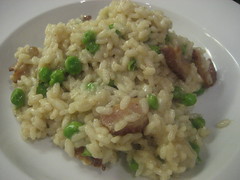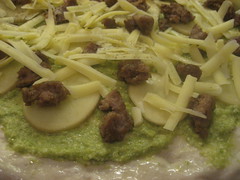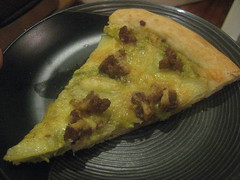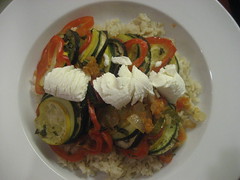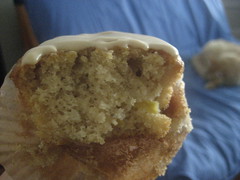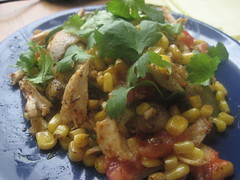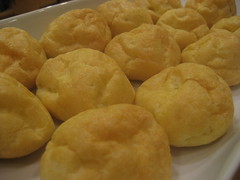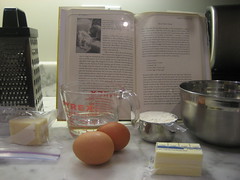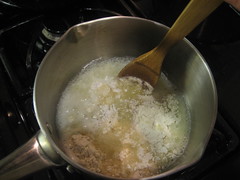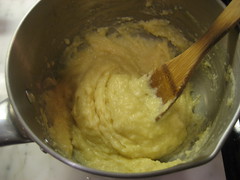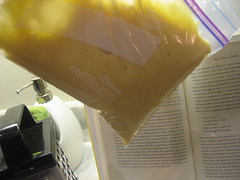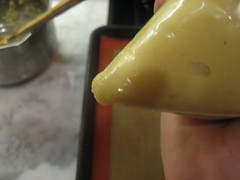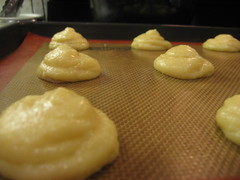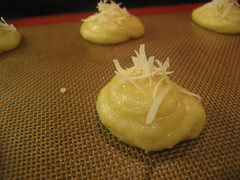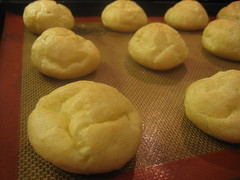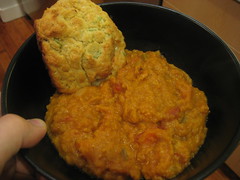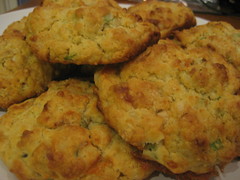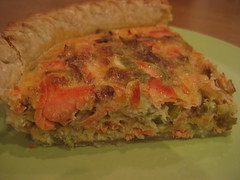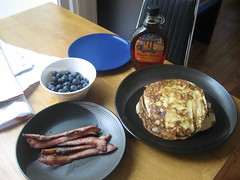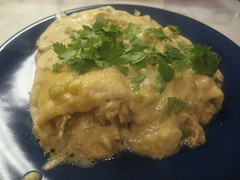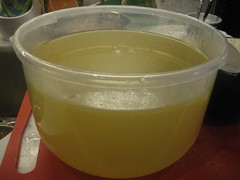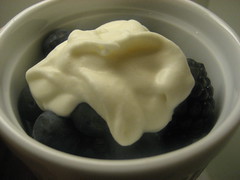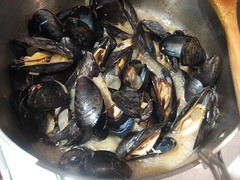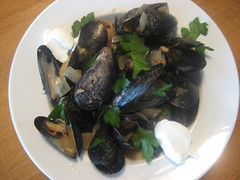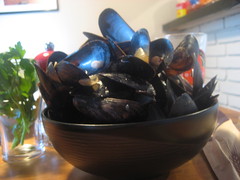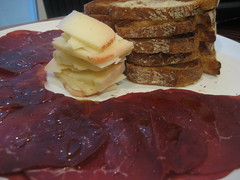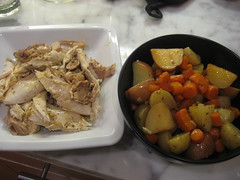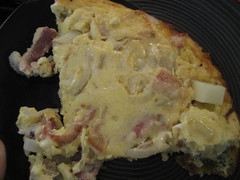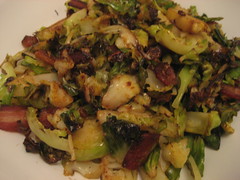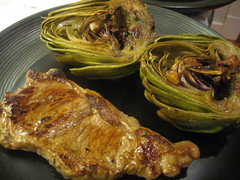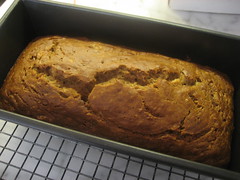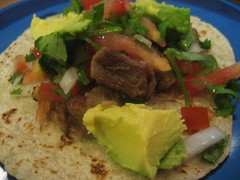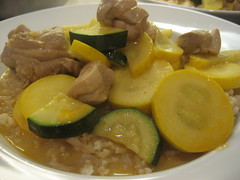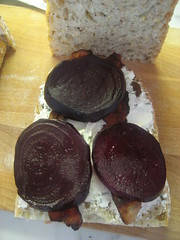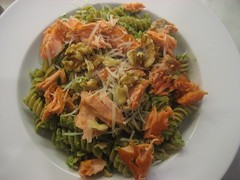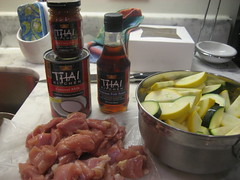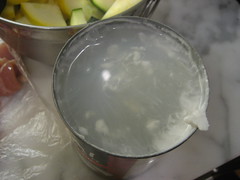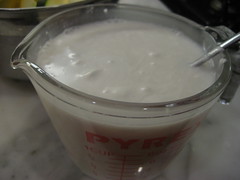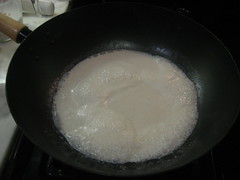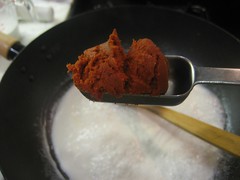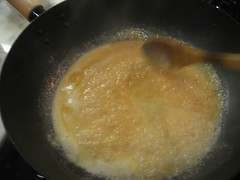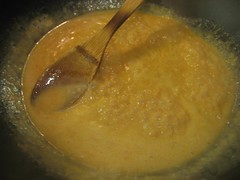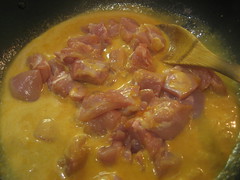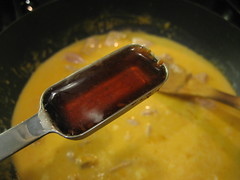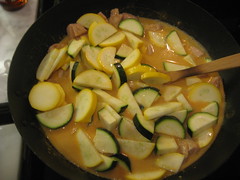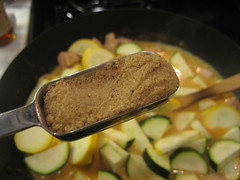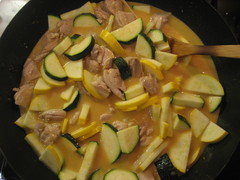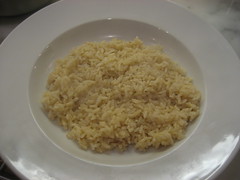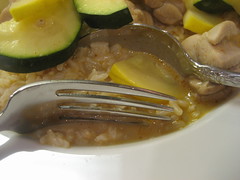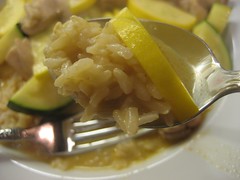Welcome to a week of similarly-colored dishes (at least they all have bright green in common!) and reused ingredients. Since moving, I have been trying to go a better job of not letting things go to waste and spoil in the fridge. (And when things do spoil, I get to compost them!) Also revisited a lot of favorites this week!
Episode 3, June 21-27
Pasta with asparagus, chevre, and lemon
A dish (too simple to call a recipe, really from) from Smitten Kitchen that I made once before, when visiting friends in Seattle a little over a year ago. I wanted something that would feel a little lighter than the enchiladas we'd enjoyed the night before. This dish first came to mind because I decided I wanted to buy asparagus from the farmers' market, but I arrived at the FM only to discover that asparagus season had passed me by. Ah well, this was still delicious. Chevre + olive oil + lemon juice makes an excellent pasta coating.
Despite risotto with bacon being my major standby dish, this particular incarnation was exciting for two reasons: first, I used the chicken stock I made last weekend! Second, and more importantly, this was my opportunity to cook peas for Andrew and have him like them! And he did! I warmed the peas with the bacon before starting on the risotto itself, then stirred them in with the cheese at the end. They weren't overcooked and mushy!
Consequently, I will be buying fresh peas from the farmers' market every weekend until they stop selling them. I have missed peas so much. (Could mushrooms be next...?)
I used up every last bit of my flour making this pizza dough; I almost didn't have enough. Aside from that little scare, this pizza was great. Mark Bittman supplied the pesto recipe, which helped me use up the rest of the asparagus and made for a tasty base. I haven't made pizza with sliced potatoes before and I was little bit worried about whether they would cook through before the crust burned. They probably could have stood a little more time in the oven but it was pretty good anyway. I've got a pie's worth of leftover dough in the freezer!
Saturday brunch was a good opportunity to use up the rest of the sausage and potato from the pizza a couple night's prior. This was good, a nice eggy start to the day.
Ratatouille
I've made this one, also from Smitten Kitchen, a few times before, but this time there were some distinct differences: for starters, I use all ingredients from the farmers' market! I think it may be the first time I've actually made this dish when zucchini and yellow squash were seasonal. It was fun to use the Japanese eggplant, which is proportionally comparable to the squashes. I used fresh basil (also a FM purchase) instead of thyme. And I made my own tomato puree by blending up some FM tomatoes with garlic, olive oil, salt and pepper. It's not the same as using the stuff from the can--lighter taste, for sure.
Let's round out the week with another Smitten Kitchen recipe! I made these once in Houston and have been dreaming of them since. So happy I got up the energy and remembered to buy peaches! I sent Andrew to work with a baker's dozen this morning; I don't expect any to come back (that's cool, though; we've still got seven six left).
Since I'm working from home these days, I eat the vast majority of my lunches here. I haven't bothered to include them though because usually I'm just eating leftovers and fruit (case in point, today was cherries, leftover tortilla, and a nectarine). But I was pretty pleased with my remixed leftovers last Thursday, inspired by the Pioneer Woman: I took some of the chicken that didn't make it into enchiladas and fried it up with corn (frozen), zucchini, chili powder, and tomatoes. It was delicious.
I ended up using the rest of the chicken in a quesadilla on Friday, mixing it up with some asparagus pesto and mozarello cheese from the pizza, using tortillas leftover from enchiladas.
Let's see if I can be as good about using up my leftovers and extra ingredients this week; I bought twice as much squash and eggplant as I needed for the rataouille. Hmm...

